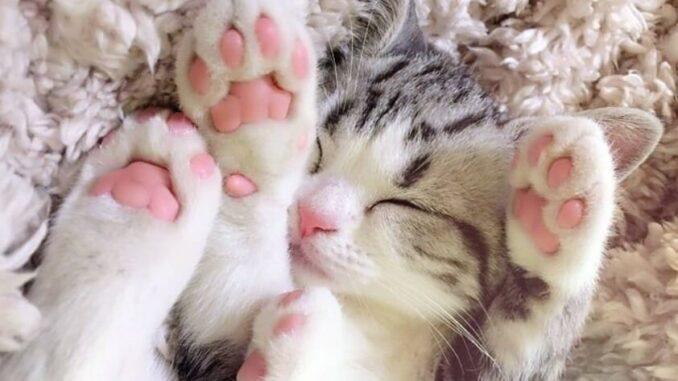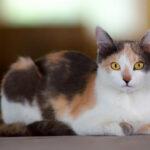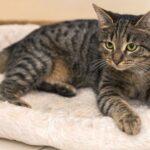
Last Updated on by Sabina
Polydactyl cats, with their unique and adorable extra toes, have captured the hearts of many cat enthusiasts around the world. These charming felines possess a genetic anomaly that results in more than the usual number of toes on their paws. Adding an element of intrigue to their already captivating presence.

The Genetic Wonder: Unraveling the Origins of Polydactyl Cats
Polydactylism, or having extra toes, is a genetic mutation that can occur in cats. Believers attribute the origin of polydactylism to a natural genetic variation that occurred centuries ago. Polydactyl cats can have various numbers of extra toes. Ranging from one or two to as many as seven on each paw. This enchanting anomaly adds to the uniqueness and allure of these extraordinary felines.
Pawful Paws: The Adorable Appeal of Polydactyl Cat Feet
The defining feature of polydactyl cats is, of course, their adorable and sometimes seemingly oversized paws. These paws can resemble mittens or snowshoes, giving polydactyl cats a distinctive and charming appearance. The extra toes do not hinder their mobility or agility; in fact. They often enhance their dexterity. Allowing them to perform remarkable feats with their paws that can amuse and astonish their human companions.
A Rich History: Polydactyl Cats and Their Maritime Connection
Polydactyl cats have a fascinating historical association with seafaring communities, particularly in regions like New England and the British Isles. Sailors highly valued these cats due to the belief that the extra toes on their paws. Provided them with increased balance and dexterity aboard ships. Polydactyl cats are commonly found in coastal areas with seafaring traditions. Where people continue to celebrate them as symbols of good luck and companionship.
Charming Personalities: The Endearing Traits of Polydactyl Cats
Beyond their unique physical feature, people adore polydactyl cats for their delightful personalities, often describing them as friendly, sociable, and affectionate companions. Polydactyl cats possess a gentle and playful nature, and their extra toes seem to amplify their charm. These cats possess intelligence and adaptability, making them wonderful additions to households of all kinds, including families, individuals, and multi-pet households.
Nurturing and Care: Catering to the Needs of Polydactyl Cats
Caring for a polydactyl cat involves providing them with the same love, attention, and basic care as any other cat. Regular veterinary check-ups, a balanced diet, and engaging playtime are essential for their overall well-being. Due to their extra toes, their nails may require more frequent trimming to prevent overgrowth or discomfort. It is also important to provide them with appropriate scratching posts and toys to help keep their claws in good condition.
Polydactyl Cat Breeds
While polydactylism, or extra toes, can occur in any cat breed, there are a few breeds that have a higher prevalence of polydactyl individuals. Here are some polydactyl cat breeds:
The Maine Coon breed has gained recognition for its large size and tufted ears, while also being associated with a higher incidence of polydactylism. Seafaring communities have intertwined their history with polydactyl Maine Coons, highly valuing them for their purported abilities to navigate ships and catch rodents.
Originating in the United States, breeders selectively bred the American Polydactyl breed to maintain and perpetuate the polydactyl trait. Breeders intentionally bred these cats to ensure the continuation of the extra-toe characteristic. They exhibit a range of coat colors and patterns and some cat registries recognize them as a distinct breed.
The Pixie-Bob, a breed that originated in the United States, is known for its wild appearance and bobcat-like characteristics. While not all Pixie-Bobs are polydactyl, some individuals within the breed exhibit this trait, adding to their unique appeal.
While they are less common, one can occasionally find polydactyl Ragdolls within the breed. Ragdolls, admired for their large size, gentle temperament, and semi-longhair coats, are a popular choice among cat enthusiasts.
British Shorthair: While not as prevalent as in some other breeds, polydactylism can occasionally occur in British Shorthair cats. Cat enthusiasts admire this breed for its round face, dense coat, and stocky build, and the presence of extra toes adds an interesting twist to their already charming appearance.
How Rare are Polydactyl Cats
People consider polydactyl cats relatively rare compared to cats with the typical number of toes.The prevalence of polydactylism varies depending on the geographical location and specific cat populations. In some areas, such as certain coastal regions or communities with historical ties to polydactyl cats, the occurrence of polydactylism may be more common.
It’s challenging to determine the exact prevalence of polydactyl cats since it can occur sporadically in any breed or mixed-breed cats. Estimates suggest that polydactyl cats make up around 2-5% of the general cat population. However, in specific breeds with a higher incidence of polydactylism, such as the Maine Coon or American Polydactyl, the occurrence may be more frequent.
It’s important to note that the rarity of polydactyl cats adds to their unique appeal and desirability for those who appreciate their distinctive physical feature. Many cat lovers find the extra toes of polydactyl cats to be endearing and seek them out specifically for their charm and individuality.


